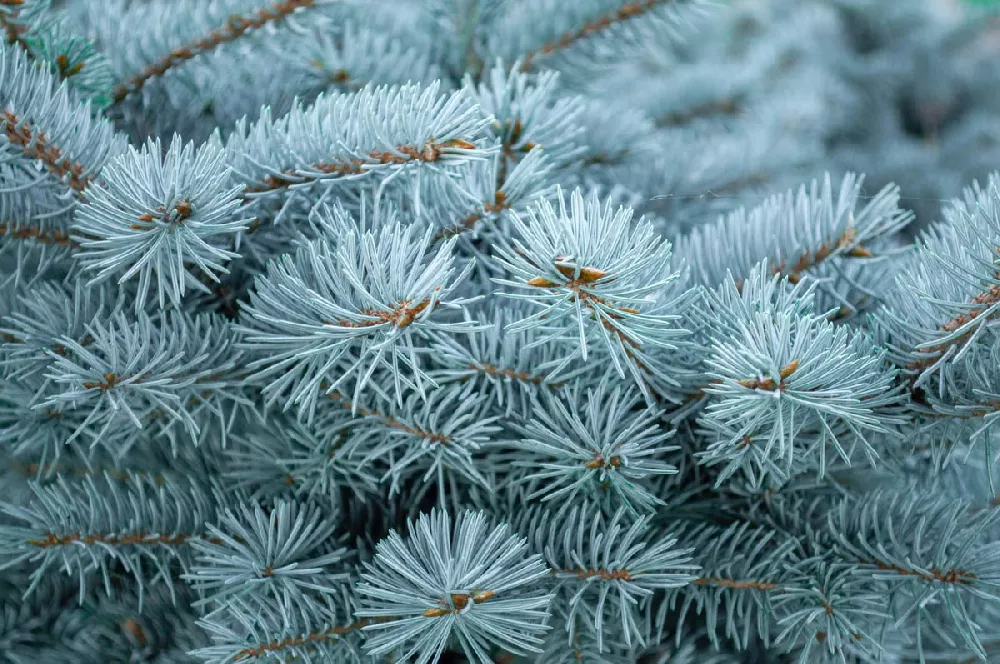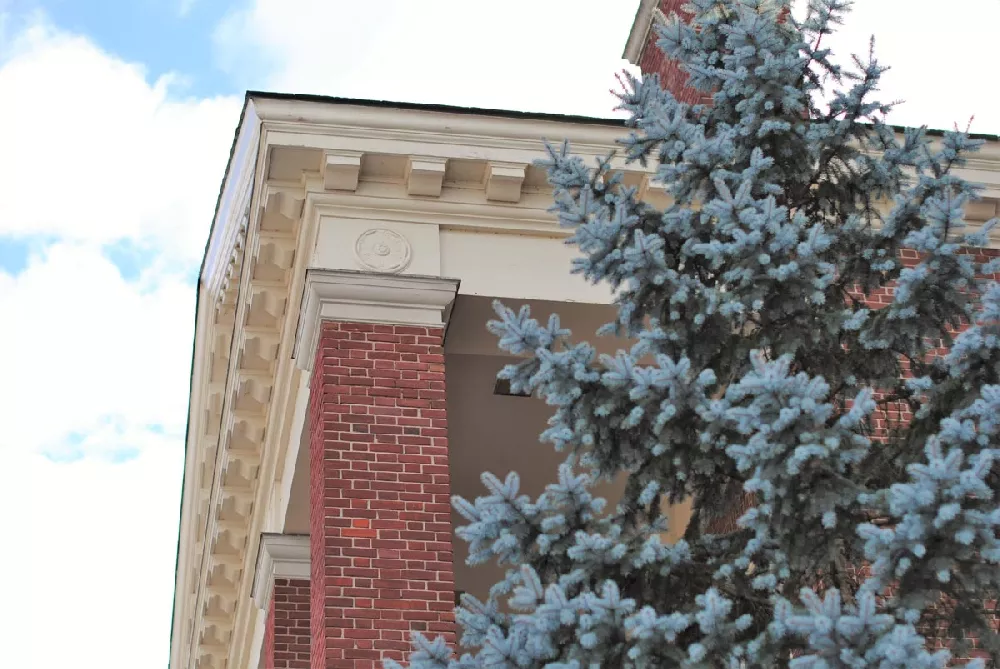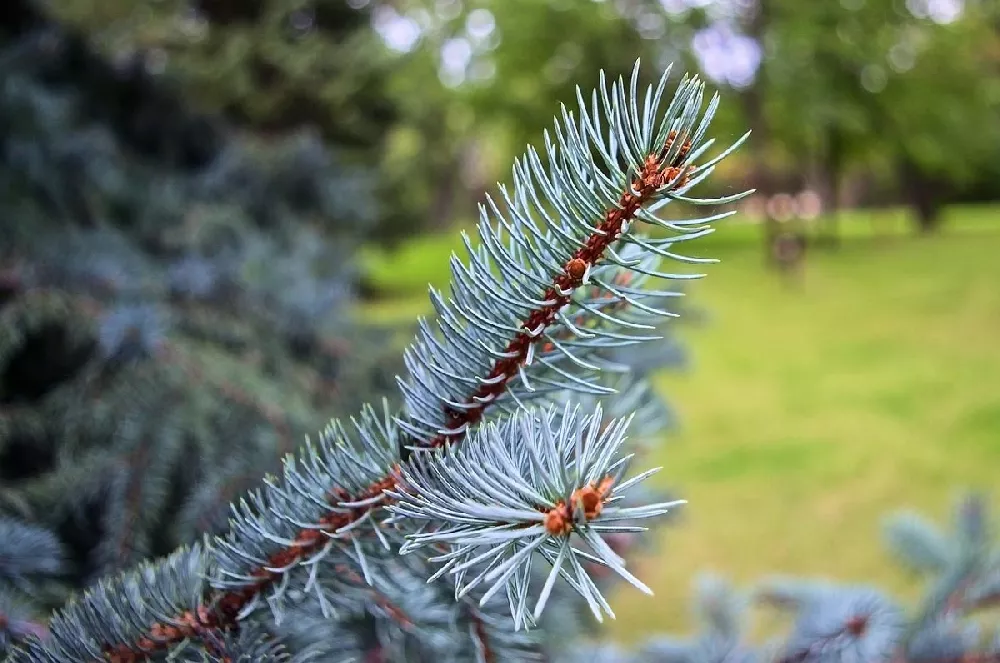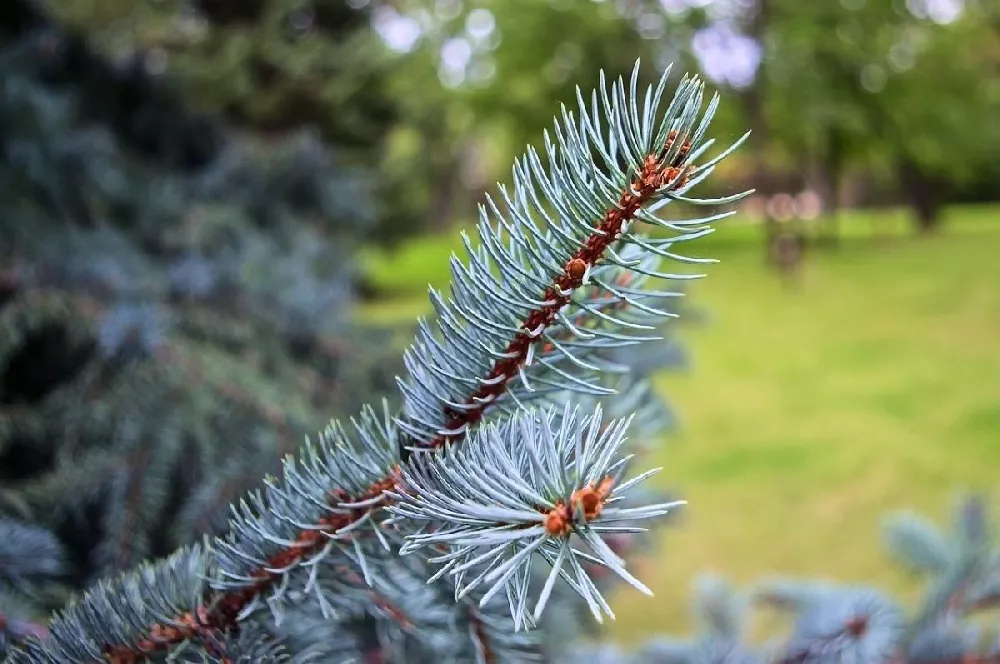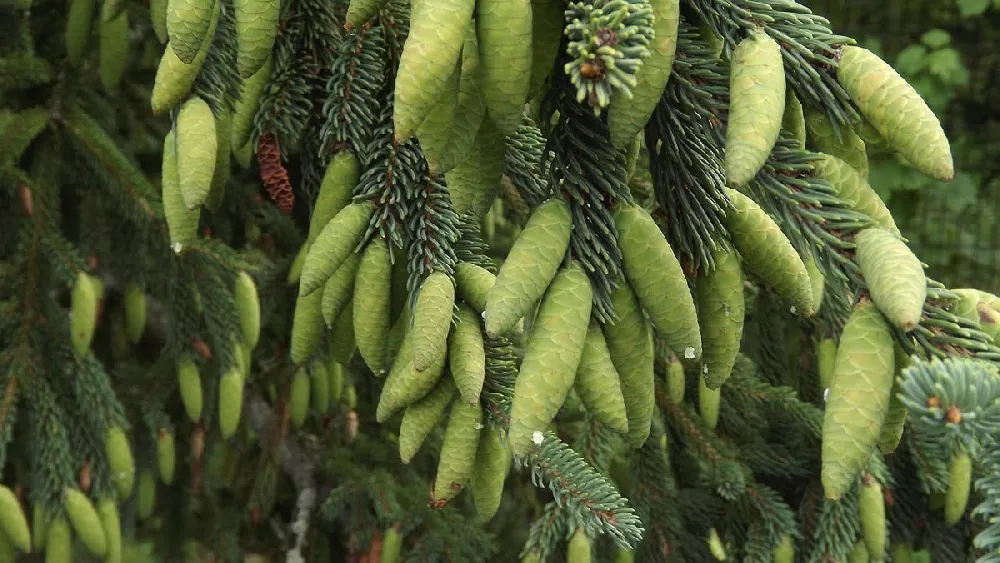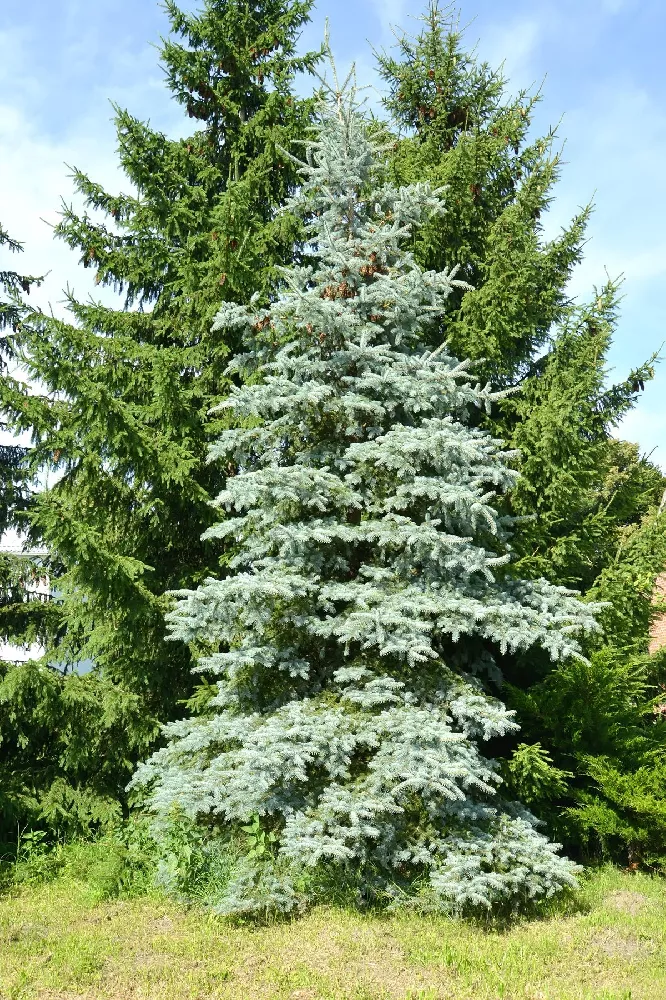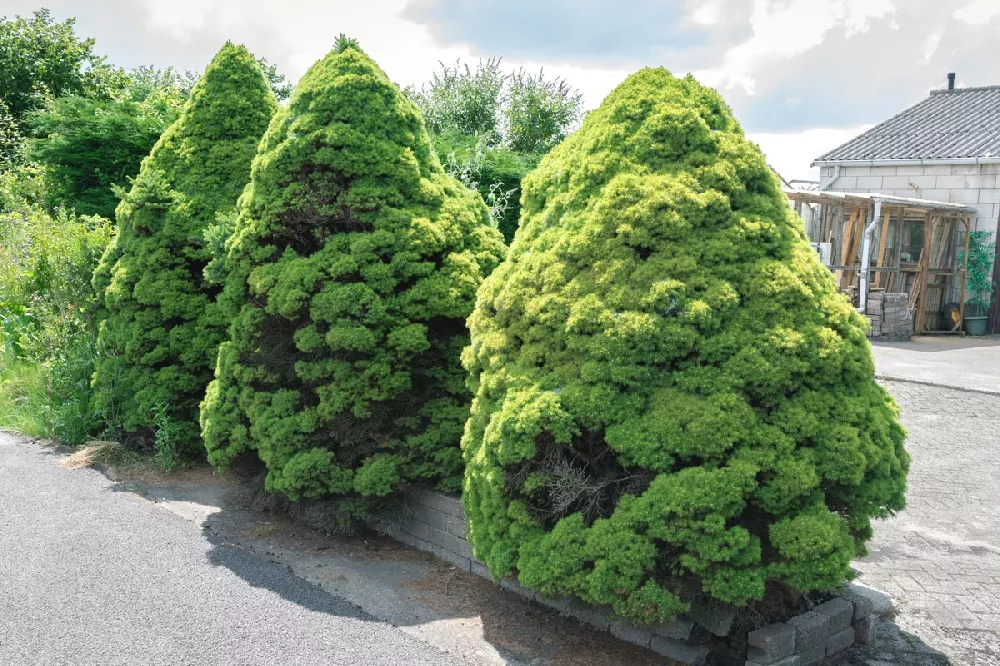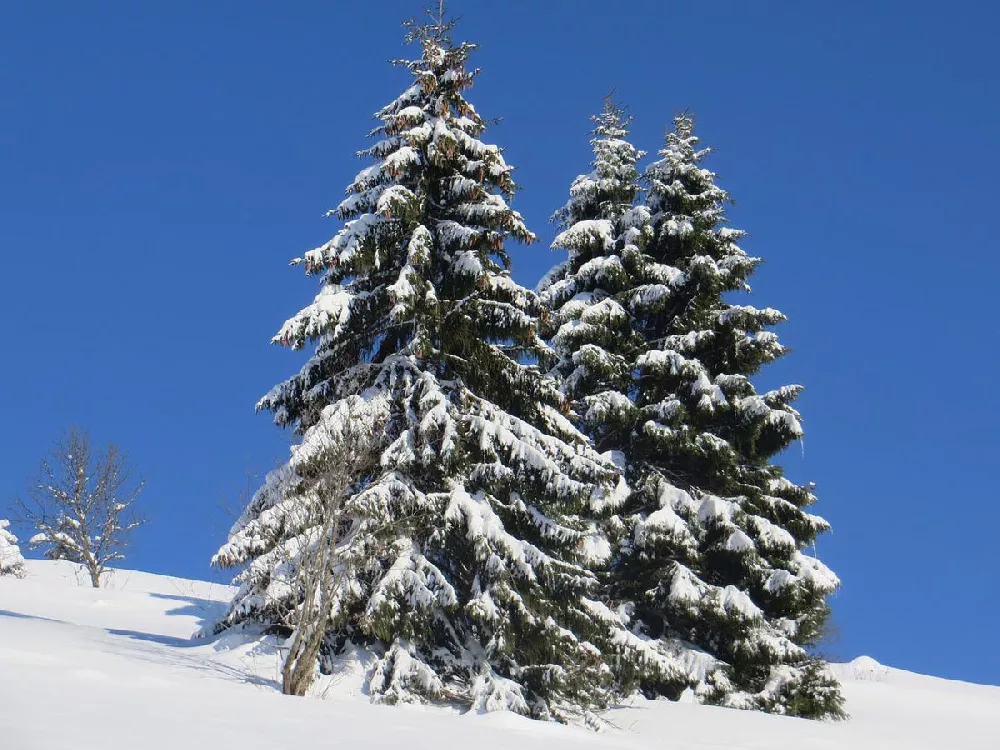- Home >
- Spruce Trees >
- Fat Albert Colorado Blue Spruce
Fat Albert Colorado Blue Spruce for Sale - Buying & Growing Guide
It may be named after a cartoon, but Fat Albert Colorado Blue Spruce, Picea pungens 'Fat Albert,' can add some serious charm to your garden or landscape. These trees have thick, silver-blue foliage and a wide, pyramidal form that make them a great living Christmas tree. They grow slowly and steadily, attaining a height of 10-15 feet after 10 years, increasing to 40 feet by maturity. Fat Albert trees also require little effort on the part of the gardener, thriving in just about any setting or soil type, and providing four-season interest in both formal and informal gardens. Here are a few more reasons to love Fat Albert:
- Very tolerant of cold weather, thriving down to -40 degrees Fahrenheit.
- Not bothered by salt or urban pollution, making it a great choice for city gardens.
- With thick needle coverage, it makes a superb windbreak.
Enter your zip code to find nearby stores that may carry this plant.
Plant Care
Sunlight

Fat Albert Colorado Blue Spruce thrives in partial to full sun, needing at least 4 hours of direct light a day.
Watering
This Blue Spruce likes moist soil, so water regularly — about once a week, especially in hot or dry weather.
Fertilizing

These trees don't need fertilizer if planted in productive soil, but you can feed with a general product if you wish.
Planting and Care
Planting instructions
Site your tree in well-draining soil where it will receive at least 4 hours of sun a day. Be sure you’re not placing it under any overhead cables or wires. Unpot the sapling and tease out any encircling roots, which can girdle the tree and slowly kill it. Dig a hole that’s as deep as the root ball and 2-3 times as wide. Place the tree in the hole, spreading out the roots as you go. Holding the tree upright and steady, fill in around it with topsoil. Tamp down as you go to eliminate air pockets. Water thoroughly. Apply a 2-3 inch layer of an organic mulch such as bark chips around the tree’s root zone to hold in moisture and hinder weeds.
Watering and nutrients
Blue spruce trees like Fat Albert like consistently moist soils, but a mature tree can tolerate some drought. Water newly-planted trees a few times a week, tapering back after a month or so unless you’re experiencing very dry or hot weather. To know if you need to water, check the soil two inches below the surface — if it’s dry, give your tree a drink. The tree doesn’t need much supplemental fertilizer. If you wish, you can give it a feeding of a general-purpose, slow-release fertilizer designed for landscape trees in early spring.
Pollination
Conifers such as the Fat Albert Colorado Blue Spruce are monoecious, meaning that male and female reproductive organs both appear on the same tree. In this case, there are male and female cones. Male cones produce pollen, which is caught by the wind and lands on female cones. Female cones then produce small seeds that are dispersed during the fall and winter.
Pruning
Unlike many landscape trees, Fat Albert does not need regular spring pruning. The tree will naturally assume a stocky pyramidal shape without any help. It is important to monitor your tree for broken, dead, or diseased branches, which should be trimmed off whenever you see them.
Pests, diseases, and animals
Blue spruce trees are not prone to many insect pests or diseases, and Fat Albert is no exception. A healthy tree can fight off minor infestations, but you can often help your tree by releasing beneficial insects such as ladybugs, which eat aphids. Other insects that may attack conifers include bagworms, balsam twig aphids, and the spruce bud scale insect. Common diseases include needle cast, a fungal disease that is more common in wet weather, and cytospora canker, which causes cankers on secondary branches. The canker is more likely to show up if your tree has a wound, so be careful when trimming or mowing around the tree.
Achieving maximum results
When designing your landscape, two of the most basic elements to consider are contrast and color. Some people don’t want to have plants that all are exactly the same color, nor a bland view that has no contrast — of texture, size, and shape. This is where the Fat Albert Colorado Blue Spruce can be a true hero. Its silver-blue foliage is unusual, and will stand out against other plants that feature deep green or light chartreuse coloring. And with its highly textural, solid pyramidal form, the tree offers contrast to more vertical or spherical plantings. Consider using this versatile tree as a backdrop to a perennial garden that includes, for example, a smaller red osier dogwood, with striking red branches. Or you might use it as a foil next to a Spartan Juniper, whose tall, slender shape provides ready contrast to Fat Albert’s broad, stocky silhouette.
FAQs
Where does Fat Albert Colorado Blue Spruce Grow?
One of the best things about this Blue Spruce is its extensive range that covers most of the continental U.S. as well as Canada. It fits in U.S. Department of Agriculture hardiness zones 2-8, which means that it can handle temperatures down to -40 degrees Fahrenheit. Only the southern tropical parts of the U.S. are off-limits to this sturdy tree.
How fast does Fat Albert grow?
Fat Albert is a fairly slow grower. In 10years, it will have achieved a height of 10-15 feet; subsequent growth of up to 40 feet may occur if the tree is well cared for, but its growth may be limited by the amount of sun received.
How is this Blue Spruce best used in the garden?
Grow this tree where you'd like a big impact, but for a minimum outlay of time or effort. For example, if you have a windy slope, a row of Fat Albert Blue Spruce will cut down on wind effectively without requiring annual pruning or much extra care. Consider using it to line a long driveway, or fill in an empty corner of your lot that needs a focal point. It's also a good tree to plant at the border between a lawn and wilder turf, such as a lightly-maintained forest.
